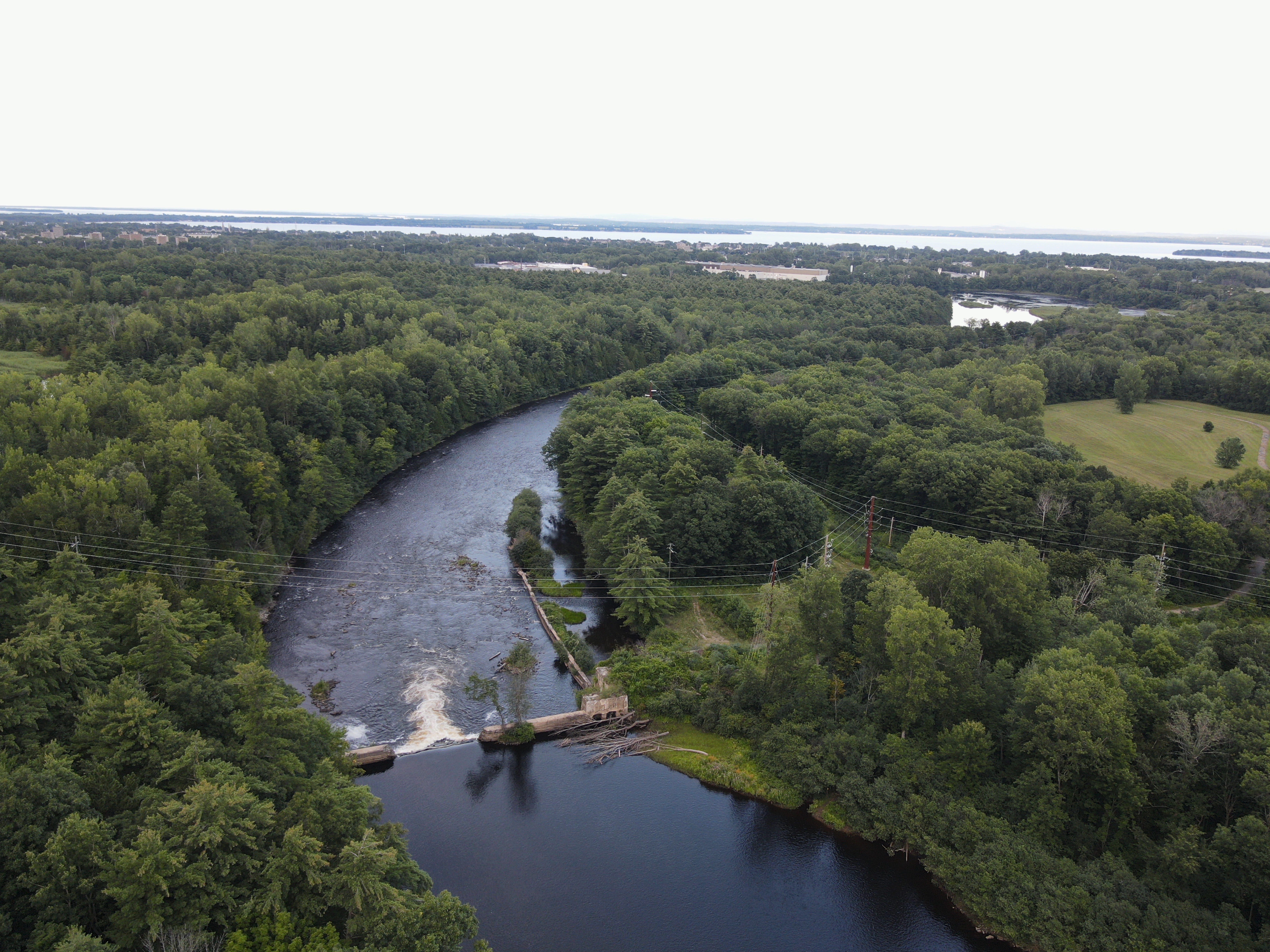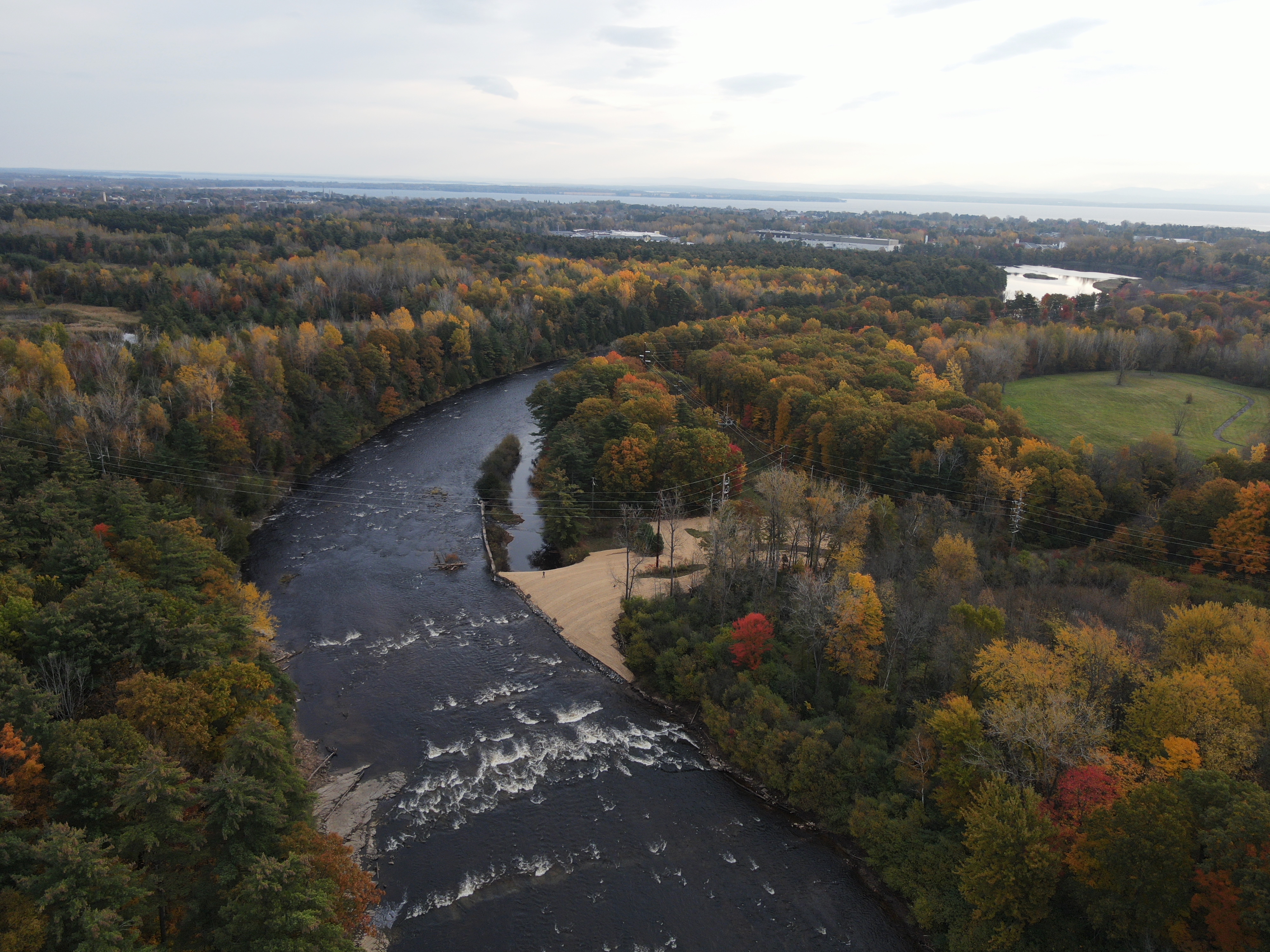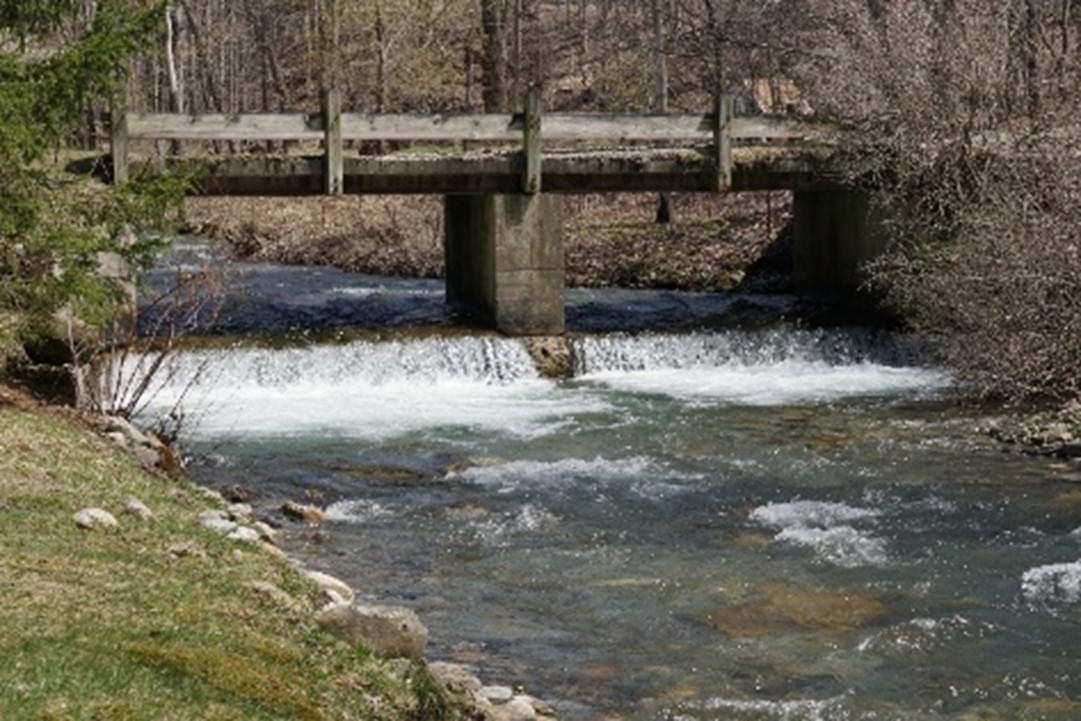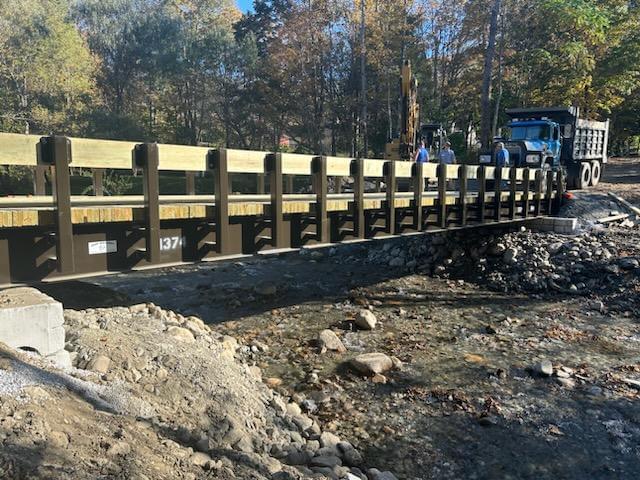Stream restoration projects reconnect vital habitat in the Lake Champlain Basin
Two years after the historic passage of the Bipartisan Infrastructure Law (BIL), projects funded by the law are already reconnecting streams and rivers in the Lake Champlain Basin.
Six key stream restoration projects supported by the LCBP with BIL funds concluded this fall. The projects—the first to cross the finish line of nearly 20 initiatives begun earlier this year—are increasing salmon and trout habitat, protecting clean water, and reducing costly flood damage to infrastructure.
Dams and poorly designed bridges and culverts under roads have segmented streams and rivers for centuries, blocking access to critical habitat for fish, insects, and other animals. Efforts to remove these barriers and allow fish and wildlife to move freely up and down streams and rivers—referred to aquatic organism passage—is critical to protecting and restoring healthy ecosystems in the Basin.
Removing Dams
One of three salmonids native to Lake Champlain, landlocked Atlantic salmon must be able to navigate upstream through the lake’s tributaries in search of cool water and habitat suitable for spawning and rearing. Dams have blocked salmon from important habitat in the Basin since the 1800s and contributed to population decline.
Over the last decade, salmon have made a remarkable return to some Lake Champlain tributaries thanks to significant work by state agencies, the non-profit sector, and concerned citizens. Despite these efforts, obstacles persist in some areas.
Originating in the Adirondack Mountains of New York, the Saranac River flows more than 80 miles and empties into Lake Champlain in the city of Plattsburgh. The river was once home to abundant salmon populations, but intensive settlement and damming throughout the nineteenth century caused severe declines.
During the summer of 2023, Trout Unlimited (TU), U.S. Fish and Wildlife Service (USFWS), and other partners spearheaded the removal of two dams on the lower Saranac River: Indian Rapids and remnants of Fredenburgh Falls. With over $1 million in project funding, including a $374,950 grant from the Lake Champlain Basin Program, the partnership freed and reconnected 27 miles of the river.
Indian Rapids dam, before and after removal. Photo: Trout Unlimited
Several Vermont-based projects also reached their final stages this fall, restoring high-quality aquatic habitat in multiple watersheds of the Lake Champlain Basin.
The Mettowee River runs through western Vermont and eastern New York and is beloved by many for its fly fishing and kayaking. In 2016 work began on a series of six Mettowee-based projects with the goal of improving habitat for brook trout. This effort culminated with the September 2023 removal of a dam and associated undersized bridge in Dorset, Vermont. All told, the projects reconnected over 50 miles of the Mettowee River and its many tributaries.
Removal efforts included restoration of the disturbed streambank, including replanting native vegetation, seeding native grasses, and restoring the adjacent floodplain. Additionally, the replacement bridge was designed to clear a 100-year flood, a crucial climate adaptation measure that will help to mitigate damage from floodwaters.
The Poultney-Mettowee Natural Resources Conservation District, Trout Unlimited, USFWS, U.S. Forest Service, Vermont Department of Environmental Conservation (VT DEC), and many landowners collaborated on the project, which received $102,000 in BIL funding from the LCBP.
Previously, a dam and associated undersized bridge posed threats to fish passage. The upgraded infrastructure improves habitat connectivity and increases flood resilience. Photo: Hilary Solomon, Poultney Mettowee NRCD
On the Mill River, a tributary to the Otter Creek, the failing Connolly Pond Dam had blocked fish passage since the 1960s. Biologists recently documented brook trout, sculpin and black-nosed dace above and below the dam.
The Vermont Natural Resources Council (VNRC) led an effort in partnership with USFWS and VT DEC to remove the structure as part of a suite of dam removal projects across several river basins in the Lake Champlain watershed. With LCBP as one of many funding partners, VNRC is working on many dam removal projects across the Basin.
Replacing & Upgrading Culverts
Dam projects tend to garner significant attention, but improperly engineered and failing culverts also inhibit the movement of fish and other aquatic organisms along streams. The benefits of upgrading these pipes and passages that convey streams and rivers under roads throughout the Basin can be significant.
In Vermont towns of Fayston and Stannard, culvert replacements completed this October have successfully connected 2.5 and 2.9 miles of upstream habitat, respectively.
The Basin Program provided $105,000 and $150,000 to Friends of the Winooski River and Caledonia County Natural Resources Conservation District for the projects. The upgraded infrastructure provides a host of added benefits, including improved local water quality, improved municipal infrastructure, and greater resilience to climate impacts.
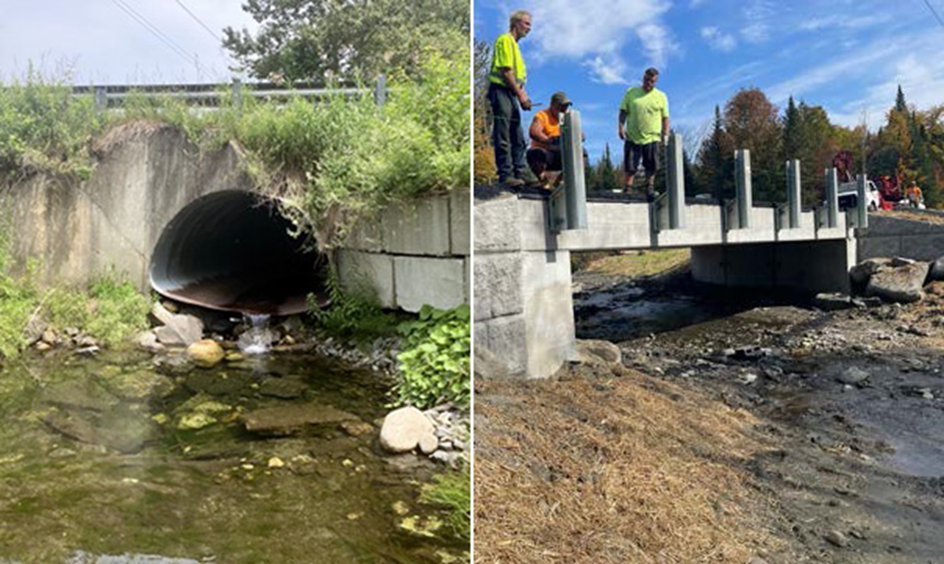
A new bridge over Stannard Brook in Vermont replaced a “perched” culvert, allowing fish and floodwaters to pass under Hutchings Farm Road more easily. Photos: Caledonia County NRCD, Stone Environmental
Power of Partnerships
Local watershed and conservation organizations that intimately know the waterways and landscapes are key to implementing work on the ground in the Lake Champlain Basin. These projects reflect their key role and the power of partnerships among these organizations.
Thanks to decades of careful observation and stewardship of regional rivers and streams by these partners, the funding available through the BIL is already at work improving the health and connectivity of waterways both large and small.
BIL funding is expected to support stream passage projects for four more years. With more grants and project proposals coming, the future of free and unobstructed aquatic organism passage through the Lake Champlain watershed looks promising.
